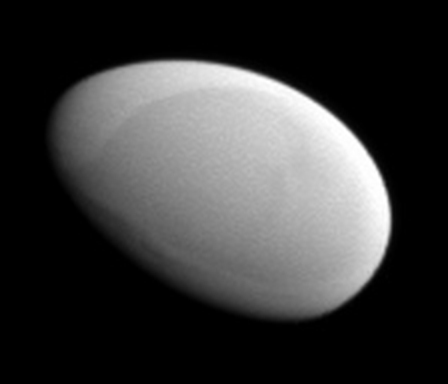
Methone is a satellite of Saturn that has an average diameter of about 3 km (about 2 miles) discovered in 2004 by the Cassini space probe. The Saturn system includes several small satellites but Methone is very special because of its shape, which is that of a smooth egg.
In May 2012, the Cassini spacecraft passed near Methone and from a distance of about 4,000 km (2,500 miles) took photographs which revealed the strange shape of this small satellite. The oddity is due to the fact that on all satellites, asteroids and even comet nuclei observed craters caused by impacts were found, Methone is the only exception.
Within the solar system, collisions are normal and in the past there were more asteroids, comets and even “pebbles”. For this reason, it’s normal that celestial bodies that have a solid surface bear the marks of many collisions. Obviously, the smooth surface of Methone has aroused the curiosity of scientists for a satellite that would otherwise be anonymous.
Methone has an orbit very close to that of two other small satellites, Pallene and Anthe. It’s also close to that of Mimas, a satellite that in comparison is huge with its diameter of about 400 km (about 250 miles). This closeness results in an orbital resonance with Methone, a phenomenon that often gives stability to a celestial body but in this case causes perturbations to the orbit of the smaller satellites.
According to one theory on the origin of Methone, Pallene and Anthe, they’re actually fragments of Mimas or Enceladus, another satellite of Saturn, broken off after a collision. Another possibility is that these five satellites are what remains of a larger group.
[ad name=”AmazonScience”]
One explanation for the surface so smooth of Methone is that this is not solid but is composed of rubble and dust. Consequently, even if this satellite has suffered impacts in the past, the tracks have been wiped out because its gravity is enough to reposition the rubble and dust.
Saturn has a few other small satellites with a surface consisting of rubble or ice that have very smooth areas but Methone is the only one to be completely smooth. The only other special feature of the surface of this satellite is that some areas appear darker than others.
For the Cassini spacecraft it’s not easy to change its trajectory to have other flybys of Methone to study it better but certainly this otherwise insignificant small satellite has become a remarkable astronomical curiosity.

